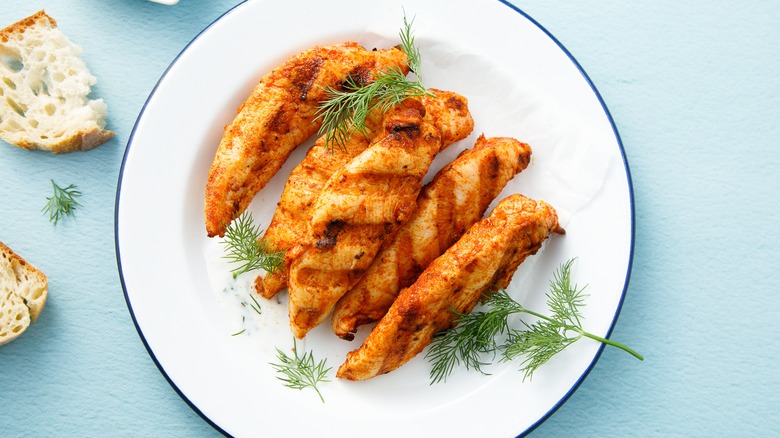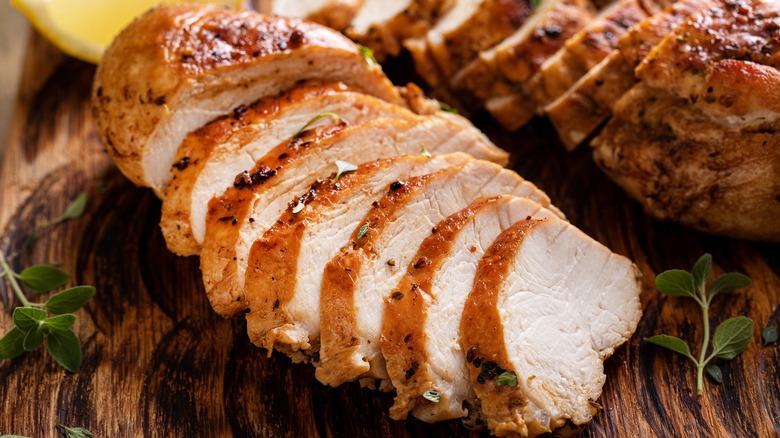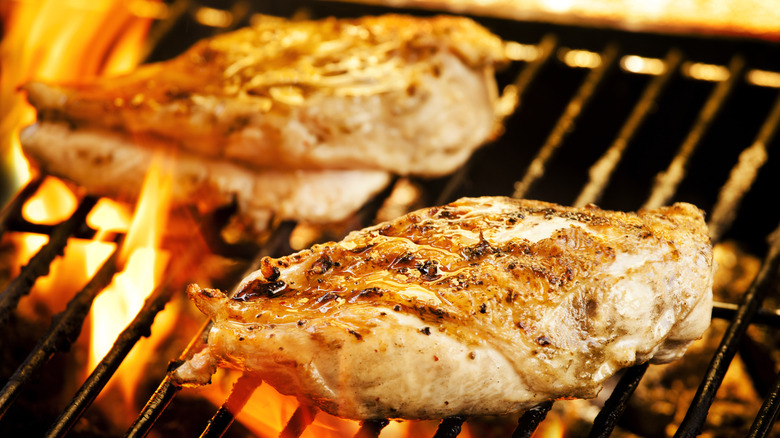What You Need To Know Before Grilling Chicken Tenders
Commonplace in restaurants and homes around the world, chicken is the go-to poultry for lunch, dinner, appetizers, and everything in between. There are tons of chicken recipes to make and adapt to your liking, including some unique fusions like grilled chicken on pitas with saffron rice and Greek slaw. Chicken tenderloins are a particularly versatile cut of the bird and taste just like the breast. In fact, you can slice breasts into strips to make tenders in a pinch. However, it can be tricky to tell when tenders are ready to come off the grill. Taking them off too soon is risky (and always to be avoided) because undercooked chicken can be a source of illness-inducing bacteria that can result in food poisoning, while leaving them on too long will render tenders rubbery and unappetizingly dry.
Typically, you would use a meat thermometer to make sure that chicken has reached an internal temperature of 165 degrees Fahrenheit, but testing the doneness this way may be difficult because tenders are smaller than other cuts of chicken. When your meat thermometer is too big to fit into the thickest part of the meat properly to get an accurate reading, what do you do to make sure that the meat isn't undercooked or overcooked?
How to gauge doneness without a thermometer
Without a meat thermometer, there are a couple of ways to test whether or not your grilled chicken tenders are done and safe to eat. One involves simply poking them, and the other requires you to cut through one. Just keep in mind, though, that the U.S. Department of Agriculture only endorses testing the temperature of poultry to determine precise doneness.
Using the poke test, Italian chef and TV personality Giada De Laurentiis demonstrates on TikTok that how the chicken responds can indicate its level of doneness. She shows that a soft or spongy reaction to poking the thick end of the meat means that it needs to cook longer. De Larentiis explains, too, that the chicken will be a lot firmer when it's done.
You can try poking the tenders before cutting into one to prevent the juicy fluids from escaping. But, if you're still not sure whether or not they're done, slice into the thick end. The juices inside should look clear, and the inside of the chicken itself should appear white and opaque, and feel firm. If you see hints of pink or red in the meat or its juices, leave the tenders on the grill for a couple minutes longer.
Tips for grilling juicy chicken tenders
In addition to gauging the doneness of grilled chicken tenders, you can make sure that they cook well and turn out juicy by following a few tips. For starters, soaking them in a concentrated saltwater bath or brine for up to eight hours allows the salt to penetrate the meat cells, resulting in more internal moisture and flavor. At the same time, the salt changes the structure of the chicken's protein strands, contributing to less water loss while cooking.
Also, marinating the tenders in spices and herbs for 15 to 30 minutes in the refrigerator after brining infuses more flavor into them. Adding ginger beer to meat marinades tenderizes and imparts a sweet yet spicy kick, while including mayo will keep your chicken incredibly juicy because of its fatty nature.
When it's time to place the chicken tenders on the grill, preheat it to around 400 degrees Fahrenheit: Skipping this step will require a longer cook time, which can lead to overcooking. Avoid overcrowding the tenders as well, leaving room between them so that they can cook evenly. The USDA recommends grilling boneless breast halves for six to eight minutes on each side. Finally, let the meat rest for a few minutes, allowing the juices to redistribute throughout each piece before you dig in.


